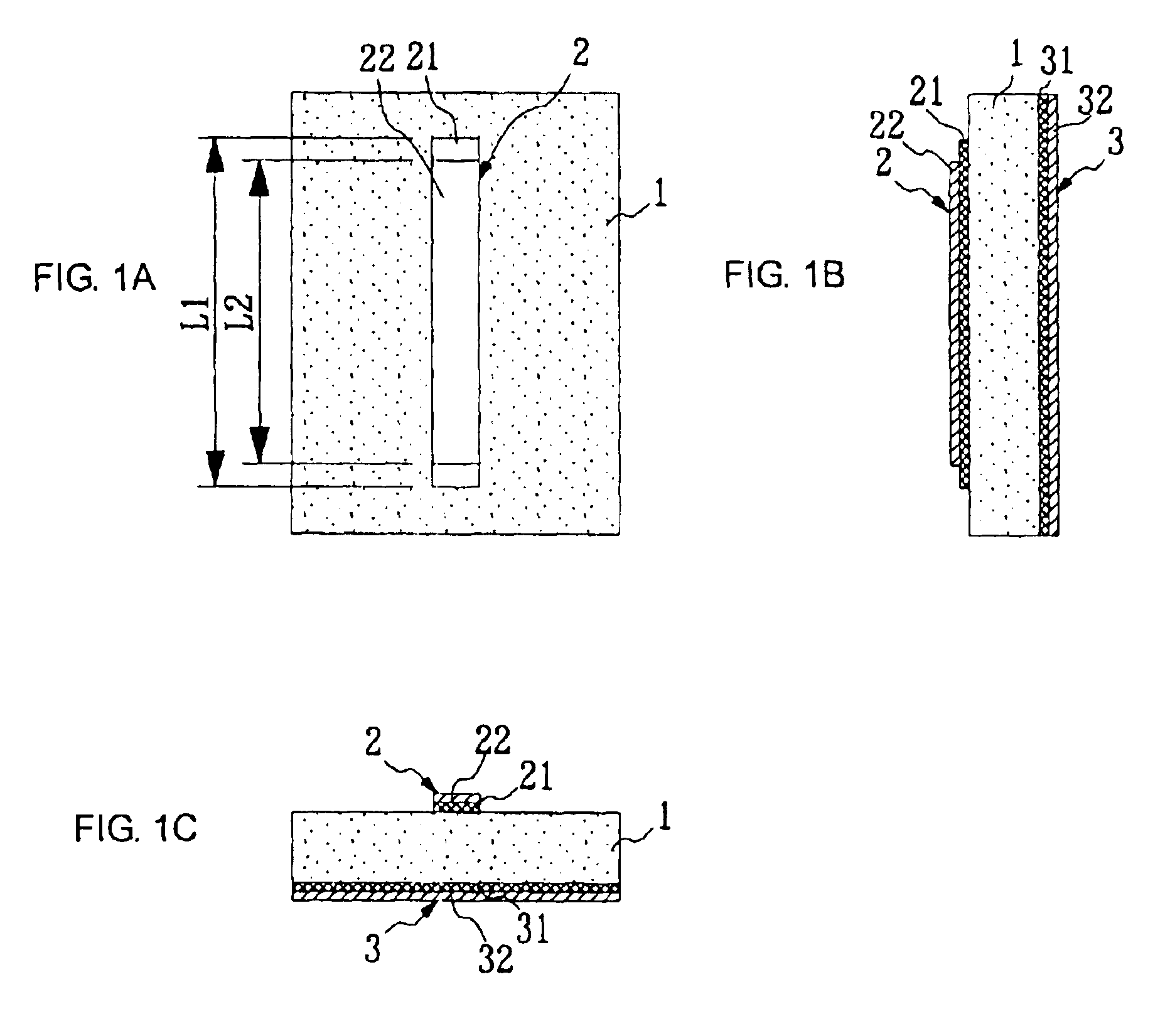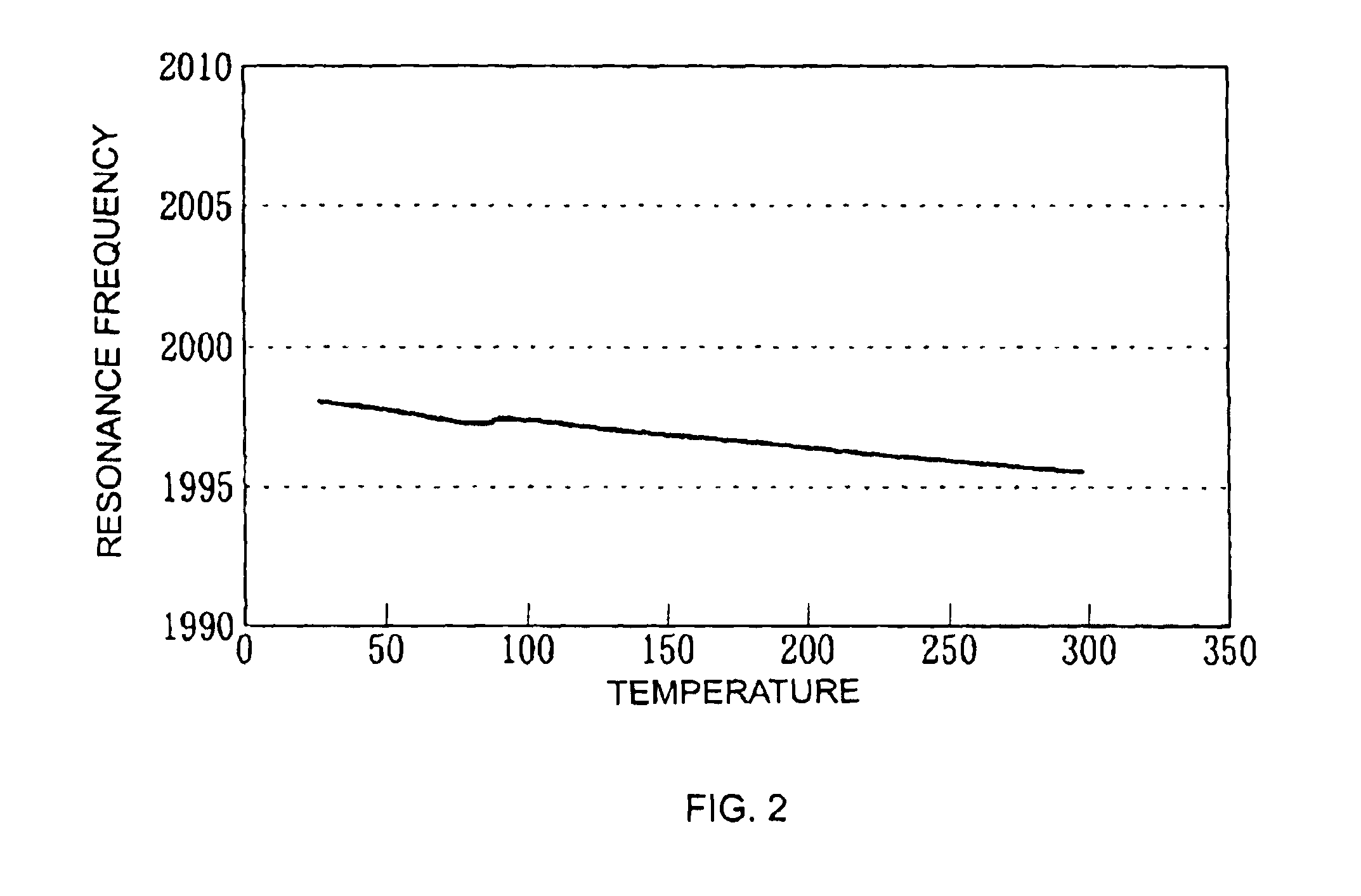Resonator, filter, composite filter, transmitting and receiving apparatus, and communication apparatus
a technology of composite filter and resonator, which is applied in the direction of resonators, superconductors/hyperconductors, waveguides, etc., can solve the problems of increasing the conductor loss of the resonator, the temperature of the resonator electrode to exceed the critical temperature, and the conventional low-loss dielectric resonator to achieve the effect of stable communication characteristics
- Summary
- Abstract
- Description
- Claims
- Application Information
AI Technical Summary
Benefits of technology
Problems solved by technology
Method used
Image
Examples
first embodiment
[0045]The configuration of a microstrip resonator according to the present invention will be described with reference to FIGS. 1A, 1B, 1C and 2.
[0046]FIG. 1A is a top view of the microstrip resonator. FIG. 1B is a sectional view of the microstrip resonator taken along the longitudinal direction. FIG. 1C is a sectional view of the microstrip resonator taken along the lateral direction.
[0047]Referring to FIGS. 1A to 1C, a resonance electrode 2 is formed on a first main surface of a dielectric substrate 1. The resonance electrode 2 comprises an electrode film 21 made of a superconductor (hereinafter, referred to as a superconducting film 21) having a longitudinal length L1 and an electrode film 22 made of a metal (hereinafter, referred to as a metal film 22) having a longitudinal length L2 deposited in that order from the first main surface of the dielectric substrate 1. The length L1 of the superconducting film 21 is greater than the length L2 of the metal film 22. Thus, the supercond...
second embodiment
[0058]The configuration of a microstrip resonator according to the present invention will now be described with reference to FIGS. 3 and 4.
[0059]FIG. 3 shows the temperature characteristics of the dielectric constant of a dielectric used in the second embodiment. FIG. 4 shows the temperature characteristics of the resonance frequency of the resonator.
[0060]The configuration of the microstrip resonator according to the second embodiment is the same as in the first embodiment with the exception of the materials of the dielectric substrate 1. More specifically, only the temperature characteristics of the dielectric constant of the dielectric constituting the dielectric substrate 1 are different from those of the first embodiment.
[0061]The temperature coefficient of the dielectric constant of the dielectric used in the second embodiment is negative. For example, the temperature coefficient is −8 ppm / K, as shown in FIG. 3.
[0062]For a dielectric having such a negative temperature coeffici...
third embodiment
[0065]The configuration of a microstrip resonator according to the present invention will now be described with reference to FIGS. 5A, 5B, and 5C.
[0066]FIG. 5A is a top view of the microstrip resonator. FIG. 5B is a sectional view of the microstrip resonator taken along the longitudinal direction. FIG. 5C is a sectional view of the microstrip resonator taken along the lateral direction.
[0067]The dielectric, superconductor, and metal used in the third embodiment are the same as in the first embodiment.
[0068]The resonance electrode 2 is formed on a first main surface of the dielectric substrate 1. The resonance electrode 2 comprises a composite electrode film 23 having a predetermined longitudinal length and the superconducting films 21 having a predetermined length and connected to ends of the composite electrode film 23. The composite electrode film 23 is composed of a superconductor and a metal. The ground electrode 3 is formed over an entire second main surface of the dielectric s...
PUM
 Login to View More
Login to View More Abstract
Description
Claims
Application Information
 Login to View More
Login to View More - R&D
- Intellectual Property
- Life Sciences
- Materials
- Tech Scout
- Unparalleled Data Quality
- Higher Quality Content
- 60% Fewer Hallucinations
Browse by: Latest US Patents, China's latest patents, Technical Efficacy Thesaurus, Application Domain, Technology Topic, Popular Technical Reports.
© 2025 PatSnap. All rights reserved.Legal|Privacy policy|Modern Slavery Act Transparency Statement|Sitemap|About US| Contact US: help@patsnap.com



